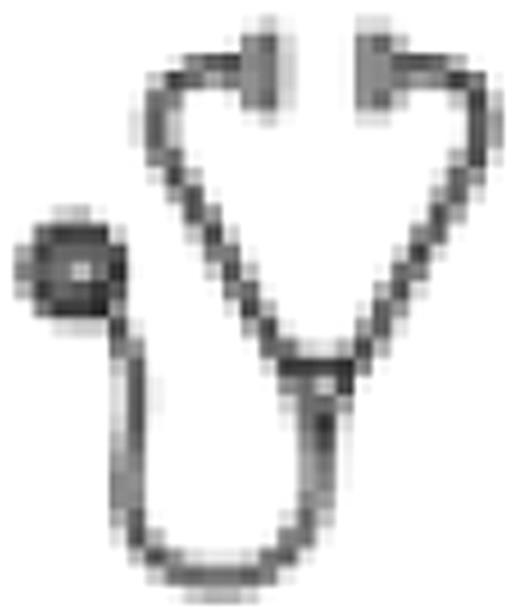Abstract
Abstract 1072
Children with acute myeloid leukemia (AML) may present with high white blood cell counts (WBC). While it is well known that hyperleukocytosis is associated with leukostasis and tumor lysis syndrome, precise estimates of incidence of associated complications and death rates during induction are lacking from homogenously treated children with contemporary supportive care. The Children's Oncology Group (COG) adopted a modified AML Medical Research Council backbone and reviewed adverse event reports in real time to optimize accurate toxicity data. From August 14, 2006 to March 31, 2010, COG AAML0531 randomized 968 children and young adults with de novo AML to gemtuzumab ozogamicin (GMTZ) versus no GMTZ. The objectives in this report were to describe the prevalence of hyperleukocytosis as defined as an initial WBC ≥ 100×109/L and its association with incidence of metabolic, pulmonary and central nervous system (CNS) toxicities and the rate of Induction I deaths.
AAML0531 included those ≥ 1 month to ≤ 30 years with de novo AML and used a 5 cycle chemotherapy regimen. Induction I consisted of cytarabine, daunorubicin, and etoposide (ADE 10+3+5). All Common Terminology Criteria for Adverse Events v3.0 ≥ grade 3 toxicities were collected prospectively.
Among the 968 children, initial WBC was available for 923 patients. Of these, 744 (80.6%) had an initial WBC < 100×109/L and 179 (19.4%) had an initial WBC ≥ 100×109/L. The Table illustrates the prevalence of metabolic, pulmonary and CNS ≥ grade 3 toxicities during Induction I. Hyperkalemia, high creatinine and hyperuricemia were generally rare. Higher initial WBC was significantly associated with hyperuricemia (P=0.005) and severe high creatinine (P=0.009). No significant differences in hyperphosphatemia or hyperkalemia were seen according to the initial WBC. The prevalence of hypoxia was 30.8% among the 13 children with an initial WBC ≥ 400×109/L and higher initial WBC was significantly associated with more hypoxia (P<0.001) and pulmonary hemorrhage (P<0.001). While CNS ischemia or hemorrhage occurred in 5.3% of children with an initial WBC ≥ 300 to < 400×109/L and 7.7% with an initial WBC ≥ 400×109/L, seizures were not reported for these patients with extremely elevated initial WBC. CNS ischemia/hemorrhage was significantly associated with increasing initial WBC (P<0.001) while there was no association between seizures and WBC.
Deaths during Induction I occurred in 10.5% of those with initial WBC ≥ 300 to < 400×109/L and 15.4% of those with an initial WBC ≥ 400×109/L. The Induction I death rate was significantly higher with higher initial WBC (P=0.005).
Almost 20% of newly diagnosed children with AML have hyperleukocytosis. With contemporary supportive care and homogenous AML therapy, tumor lysis syndrome is uncommon and hyperkalemia is no longer affected by high initial WBC although hyperuricemia and acute renal failure still occur in spite of contemporary supportive care. In addition, pulmonary toxicities in terms of hypoxia and pulmonary hemorrhage as well as CNS ischemia/hemorrhage remain problematic with increasing risk by initial WBC. At least 10 to 15% of patients with an initial WBC ≥ 300 × 109/L died during their first chemotherapy cycle and thus, strategies to improve outcomes related to pulmonary toxicity and CNS injury in hyperleukocytosis are important future goals.
GRADE 3, 4 OR 5 TOXICITIES AND INDUCTION I DEATHS ACCORDING TO THE INITIAL WHITE BLOOD CELL COUNT
| . | N . | High Potassium . | High Phosphate . | High Creatinine . | High Urate . | Hypoxia . | Hemorrhage Pulmonary . | Seizure . | CNS Ischemia or Hemorrhage . | Induction I Death . |
|---|---|---|---|---|---|---|---|---|---|---|
| No Hyperleukocytosis | 744 | 2.2% | 3.8% | 0.7% | 0.4% | 4.8% | 0.3% | 0.1% | 0.4% | 1.5% |
| ≥ 100 to < 200 × 109/L | 100 | 4% | 2% | 2% | 1% | 9% | 2% | 2% | 2% | 3% |
| ≥ 200 to < 300 × 109/L | 47 | 0% | 12.8% | 0% | 0% | 14.9% | 2.1% | 0% | 0% | 2.1% |
| ≥ 300 to < 400 × 109/L | 19 | 0% | 10.5% | 5.3% | 0% | 5.3% | 5.3% | 0% | 5.3% | 10.5% |
| ≥ 400 × 109/L | 13 | 7.7% | 0% | 0% | 7.7% | 30.8% | 7.7% | 0% | 7.7% | 15.4% |
| . | N . | High Potassium . | High Phosphate . | High Creatinine . | High Urate . | Hypoxia . | Hemorrhage Pulmonary . | Seizure . | CNS Ischemia or Hemorrhage . | Induction I Death . |
|---|---|---|---|---|---|---|---|---|---|---|
| No Hyperleukocytosis | 744 | 2.2% | 3.8% | 0.7% | 0.4% | 4.8% | 0.3% | 0.1% | 0.4% | 1.5% |
| ≥ 100 to < 200 × 109/L | 100 | 4% | 2% | 2% | 1% | 9% | 2% | 2% | 2% | 3% |
| ≥ 200 to < 300 × 109/L | 47 | 0% | 12.8% | 0% | 0% | 14.9% | 2.1% | 0% | 0% | 2.1% |
| ≥ 300 to < 400 × 109/L | 19 | 0% | 10.5% | 5.3% | 0% | 5.3% | 5.3% | 0% | 5.3% | 10.5% |
| ≥ 400 × 109/L | 13 | 7.7% | 0% | 0% | 7.7% | 30.8% | 7.7% | 0% | 7.7% | 15.4% |
Smith:Pfizer, Inc: Member, Medical Advisory Committee (for bosutinib, not GO).

This icon denotes an abstract that is clinically relevant.
Author notes
Asterisk with author names denotes non-ASH members.

This feature is available to Subscribers Only
Sign In or Create an Account Close Modal